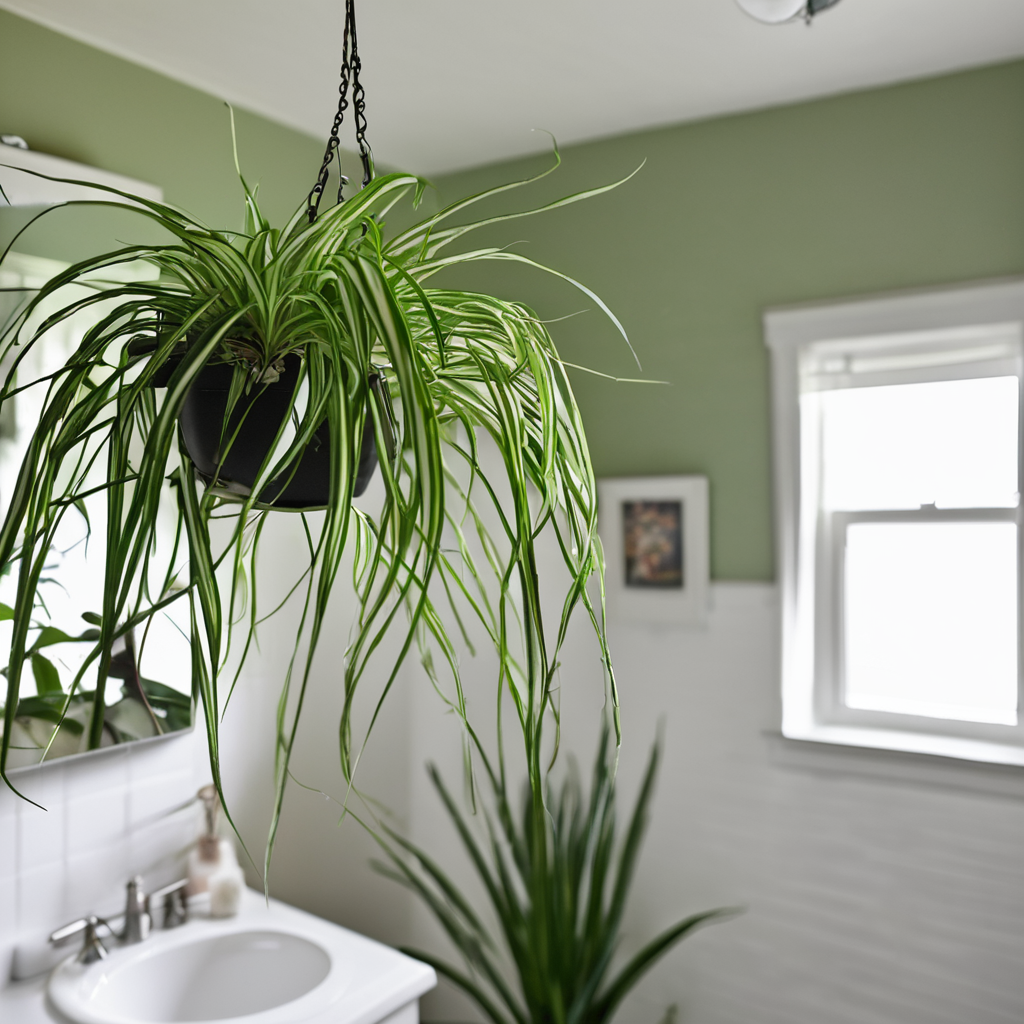Spider plants are one of the most popular and easy-to-grow houseplants around. With their long, strappy leaves and ability to thrive with minimal care, it’s no wonder spider plants have become a favorite for many plant parents.
However, just because they’re forgiving doesn’t mean they don’t need some TLC. Here are my top tips for growing beautiful, healthy spider plants.
One thing I love about spider plants is their ability to spread and multiply on their own. They reproduce via small plantlets called spiderettes that form in the leaf axils where the leaves meet the stem. As these spiderettes mature, they will develop roots of their own.
You can choose to leave them attached to continue multiplying your spider plant or snip them off to start new plants. I often remove 2-3-inch spiderettes and pot them up in their own 4-inch pots to give as gifts. This is also a great way to expand your collection without having to purchase additional plants.

Light
Light is an important factor when growing spider plants. While they can tolerate low-light conditions better than many other houseplants, brighter indirect light will result in bushier growth and more vibrant variegation.
I find my spider plants do best in an east- or west-facing window where they receive morning or afternoon sun. Be sure not to place them in direct sunlight, as this can cause the leaves to burn.
As indoor light levels are generally lower than outdoor ones, you may notice your spider plant becoming leggy or losing some of its variegation in the winter months. Rotating the plant weekly and moving it closer to the window if needed can help compensate for the lower light.

Water
Water is another key to keeping your spider plant happy. These plants are drought-tolerant but still need moisture. The soil should be allowed to dry out slightly between waterings, but not completely.
I find it best to water when the top 1-2 inches of soil are dry. Spider plants are also very tolerant of tap water, but I like to use filtered or rainwater when possible. For plants in smaller pots, check the soil moisture every 5-7 days. Those in larger pots may only need water every 10–14 days. Consistency is important, as soggy soil can cause root rot.
Fertilzer
Fertilizing your spider plant during the growing season will give it a boost and keep it looking its best. I use a balanced liquid houseplant fertilizer diluted to half the recommended strength about once a month from spring to fall. Be sure not to get any fertilizer on the leaves, as it can burn them.
Spider plants are heavy feeders when actively growing, so fertilizer is important to encourage lush growth and healthy foliage. I also like to repot my spider plants each spring into a container just one size larger to provide more room for new roots and pups to develop.
Pests
Spider mites can be a problem for spider plants occasionally. These tiny pests will cause stippling on the leaves and spin fine webbing on the undersides of the leaves. Isolate any infested plants immediately and treat them with neem oil or insecticidal soap, being sure to treat both the tops and undersides of the leaves.
Good hygiene, like regular cleaning of plant leaves and surfaces they touch, can help prevent mites. Mealybugs are another occasional indoor pest for spider plants. Look for fluffy white masses in leaf axils and treat with alcohol on a cotton swab if seen.
Final Thoughts
With the right care, your spider plant can grow and thrive for many years, producing more plantlets to share. Be sure to snip off flower spikes as they appear too, as the plant puts more energy into flowering than leaf production.
Always remove dead or dying leaves to keep your spider plant looking its best. I hope these tips help you grow a beautiful, bountiful spider plant that brings you joy for seasons to come! Let me know if you have any other questions.
